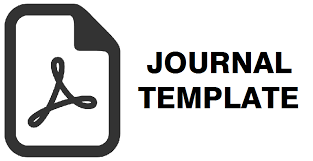Geospatial Celebration of Sidomulyo Village: A Spatial Analysis of Tourist Village Development
DOI:
https://doi.org/10.35719/hrtg.v3i2.99Keywords:
Geospatial, Celebration of Sidomulyo Village, Spatial Analysis, Tourist Village DevelopmentAbstract
Sidomulyo Village is on the outskirts of a forest located at the eastern end of Jember Regency, East Java. The village's location, on the outskirts of the forest and surrounded by the Gumitir Mountains, is a challenge in developing this village. In addition, the extended access to the city center has made Sidomulyo Village receive less attention from the district government and investors. A touch of creative and innovative village programs to introduce this village to the broader community needs to be done. One of the program breakthroughs in Sidomulyo Village was a series of activities summarized in the ”Sidomulyo Village Celebration” event. The aims of this study were (1) to find out the objectives and program activities in the "Hajatan Desa Sidomulyo" event, (2) to analyze the spatial reach of the event "Hajatan Desa Sidomulyo", (3) to analyze the positive and negative impacts of the event "Hajatan Desa Sidomulyo". The method used in this research is descriptive qualitative by observing, interviewing, and reviewing necessary research supporting documents. The results showed that the purpose of holding a village celebration was to introduce and build branding in the Sidomulyo Tourism Village. The activity programs for village celebrations include Sidomulyo Tourism Village (STV), Sidomulyo Adventure Trail (SAT), Archipelago Cultural Carnival, National Sheep Contest, Sidomulyo Bersholawat, and Village Celebration Night. The Sidomulyo Village Celebration event geospatially only reached three hamlets: Krajan, Curah Manis, and Curah Damar. Meanwhile, three other hamlets, namely Tanah Manis, Garahan Kidul, and Gunung Gumitir, were not reached or touched by Village Celebration activities. Sidomulyo Village Celebration activities have positively and negatively impacted the development of this village on the outskirts of the forest.
References
Butarbutar, R. R., Wiratanaya, G. N., Rachmarwi, W., Ganika, G., Susanty, S., Widyaningsih, I. U., Pertiwi, W. N. B., Kurniawan, J., Madjid, R., Setiorini, A., Hasbi, I., Sari, D. P., Nugroho, L., Susanti, P. H., Azhar, A., & Suma, N. N. (2021). PENGANTAR PARIWISATA. CV WIDINA MEDIA UTAMA. https://repository.penerbitwidina.com/publications/345261/
Cioanc?, L.-M. (2015). The Negative Impact Of Tourism In The Area Of The Bârg?uMountains Onto The Local Environment. International Conference KNOWLEDGE-BASED ORGANIZATION, 21(1), 170–178. https://doi.org/10.1515/kbo-2015-0028
Dey, J., Sakhre, S., Gupta, V., Vijay, R., Pathak, S., Biniwale, R., & Kumar, R. (2018). Geospatial Assessment of Tourism Impact on Land Environment of Dehradun, Uttarakhand, India. Environmental Monitoring and Assessment, 190(4), 181. https://doi.org/10.1007/s10661-018-6535-4
Diskominfo Kabupaten Jember. (2022). PPID Desa Kabupaten Jember. https://ppid-desa.jemberkab.go.id/pelaksana/detail/149
Ismayanti. (2020). Dasar-Dasar Pariwisata Sebuah Pengantar. http://repository.usahid.ac.id/322/1/Draf%20Buku%20Dasar-dasar%20Pariwisata%20-%20Ismayanti%20%281%29.pdf
Kemenparekraf RI. (2022). Desa Wisata Sidomulyo. https://jadesta.kemenparekraf.go.id/desa/sidomulyo_3
Kepala Dusun Desa Sidomulyo. (2022). Wawancara Infrastuktur Desa Sidomulyo[Komunikasi pribadi].
Kominfo Republik Indonesia. (2021). Informasi Geospasial Jadi Dasar Perencanaan Kebijakan. Website Resmi Kementerian Komunikasi Dan Informatika RI. http:///content/detail/36170/informasi-geospasial-jadi-dasar-perencanaan-kebijakan/0/berita
Krisnandika, A. A. K., & Yusiana, L. S. (2020). Identification of Tourist Attractions in Timpag Village. IOP Conference Series: Earth and Environmental Science, 501(1), 012015. https://doi.org/10.1088/1755-1315/501/1/012015
Media Center Sidomulyo. (2022a). Mas Kades Hadiri Pengembangan Kapas...https://ppid-desa.jemberkab.go.id/berita/detail/mas-kades-hadiri-pengembangan-kapasitas-trc-bpbd-jember-di-hutan-pinus-sidomulyoMedia Center Sidomulyo. (2022b, April 13). 10 PROGRAM UNGGULAN -Deswita Sidomulyo. https://deswitasidomulyo.com/10-program-unggulan/Media Center Sidomulyo. (2022c, April 18). Profil dan Potensi Desa Sidomulyo 2022. https://deswitasidomulyo.com/profil-desa-sidomulyo-2022/
Postma, A., & Schmuecker, D. (2017). Understanding and overcoming negative impacts of tourism in city destinations: Conceptual model and strategic framework. Journal of Tourism Futures, 3(2), 144–156. https://doi.org/10.1108/JTF-04-2017-0022
Undang-Undang Nomor 4 Tahun 2011 Tentang Informasi Geospasial, (2011). https://www.dpr.go.id/dokjdih/document/uu/UU_2011_4.pdf
Rodrigues, P., Borges, A. P., & Vieira, E. P. (2021). Corporate social responsibility image and emotions for the competitiveness of tourism destinations. Journal of Place Management and Development, 14(2), 134–147. https://doi.org/10.1108/JPMD-01-2020-0005
Saha, K., Kalra, R., & Khare, R. (2022). A geospatial approach to enhance religious tourism in India—A case of Ujjain city, Madhya Pradesh. GeoJournal, 87(3), 1793–1810. https://doi.org/10.1007/s10708-020-10334-w
Setyawati, T. (2015). Modal Sosial Dalam Pengembangan di Desa Wisata Tembi Kecamatan Sewon Kabupaten Bantul Daerah Istimewa Yogyakarta. https://core.ac.uk/reader/33525760
Setyorini, B. (2012). Analisis Kepadatan Penduduk dan Proyeksi Kebutuhan Permukiman Kecamatan Depok Sleman Tahun 2010 –2015.
Simanihuruk, M. (2019). Tourist Attraction and Tourist Facilities Intentions to Visitor Satisfaction: Case of Sindang Barang Cultural Village. E-Journal of Tourism, 210. https://doi.org/10.24922/eot.v6i2.53472
Subagyo, R. A. (2021). Modal Sosial Dalam Pemberdayaan Masyarakat di Desa Purwosari Kecamatan Purwosari Kabupaten Bojonegoro. Paradigma, 10(1), Art. 1. https://ejournal.unesa.ac.id
Suma, N. N. (2018). Informasi Geospasial untuk Membangkitkan Potensi WisataPesisir Pada Jalur Lintas Selatan (JLS) Jember –Jawa Timur. JURNAL GEOGRAFI, 10(1), Art. 1. https://doi.org/10.24114/jg.v10i1.8321
Sun, Q., Zhang, N., Liu, Z., & Liao, B. (2020). Tourism Resources and Carrying Capacity of Scenic Tourism Areas Based on Forest Ecological Environment. Southern Forests: A Journal of Forest Science, 82(1), 10–14. https://doi.org/10.2989/20702620.2020.1733766
Vijay, R., Kushwaha, V. K., Chaudhury, A. S., Naik, K., Gupta, I., Kumar, R., & Wate, S. R. (2016). Assessment of Tourism Impact on Land Use/Land Cover and Natural Slope in Manali, India: A Geospatial Analysis. Environmental Earth Sciences, 75(1), 20. https://doi.org/10.1007/s12665-015-4858-9
Downloads
Published
How to Cite
Issue
Section
License
Copyright (c) 2022 heritage

This work is licensed under a Creative Commons Attribution-ShareAlike 4.0 International License.





